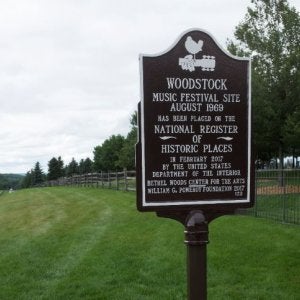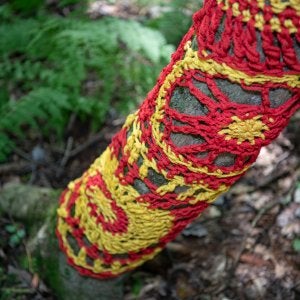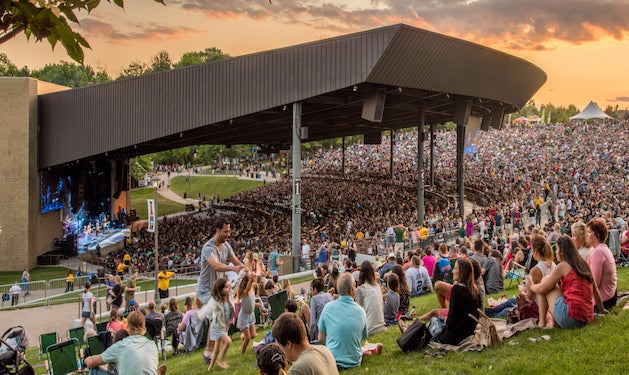Preservation of the Historic Site of the 1969 Woodstock festival
As stewards of the historic site, Bethel Woods continues to discover, develop, and preserve the integrity of these sacred grounds.
Cultural Landscape Report
In 2014, The Museum at Bethel Woods commissioned a Cultural Landscape Report to serve as a guide for stewardship and interpretation of the Woodstock festival historic site. Historic landscape architecture firm Heritage Landscapes, LLC performed studies of the site to create the report, which summarizes the history, current conditions, and recommended treatments of the historic property. Following the report, Bethel Woods is working to preserve a landmark of popular culture and bringing the place to life as an exciting destination for visitors to explore. You can view a copy of the report here.
Funding for the CLR was made possible in part by grants from Jeff Bank Foundation; National Trust for Historic Preservation; The A. Lindsay and Olive B. O’Connor Foundation; and Preservation League of New York State; and generous support from Jeffrey Allison and James Lomax, Mr. and Mrs. Jeff Boyd, Mr. and Mrs. Ric Coombe, Donald F. Dembert, Robyn Gerry and children, the Grillo Family, the Fishman Family and Majestic Drug Company, Steve and Sue Marton, and Mr. and Mrs. Howard Schor.

National Register
In 2017, the site of the 1969 Woodstock festival was officially placed on the National Register of Historic Places, a formal acknowledgment of the significance of the site’s heritage. Members of the National Register benefit from protections and grant opportunities for preservation as well as historic recognition, joining the ranks of national treasures such as the Empire State Building, the Grand Canyon, and the Statue of Liberty.
Archaeology Preserves Woodstock festival Site
In 2018, a team of archaeologists from the Public Archaeology Facility at Binghamton University led a series of micro-excavations to establish the location of the stage, sound, and light towers from the festival. Using computer-assisted design maps, archaeologists sought out soil disturbances, discolorations and other evidence to pinpoint the outline of key festival landmarks, including the main stage, performers’ footbridge and the towers. Click here to watch a video on their efforts from The Associated Press.
Bindy Bazaar Reborn
In 1969, the Bindy Bazaar was a marketplace and trail system that acted as the heart of Woodstock, connecting two major areas of festival grounds.
History
In the woods, attendees sold crafts, bartered for goods, avoided the rain, and reunited with friends. In 2014, as stewards of the historic site, Bethel Woods commissioned a report to recommend ways in which to better preserve and interpret the site for guests. Landscape historians and architects produced an enlightening and detailed Cultural Landscape Report, which describes the natural and human-made features of the landscape, which remain remarkably similar to its historic condition. The report makes 21 concrete recommendations for how the site can be better preserved, interpreted, and made more authentic. One such faction was developing the trails within the Bindy Bazaar woods.
Today
Guests can now explore the woods and see evidence that details the ways in which they were used during the festival. “The restoration of the Bindy Bazaar Trails celebrates our historic location and further illustrates the lasting impact the 1960s has on the modern era,” said Darlene Fedun, Chief Executive Officer of Bethel Woods Center for the Arts. “It is our hope that families will visit Bethel Woods to engage with nature and cultivate creative personal experiences,” she continued.

Carol Hummel Art Installation
To celebrate this aspect of festival history and bring to life the art, craft, and sense of joy embodied by the Bindy Bazaar and the Festival itself, Bethel Woods presents a large-scale public art installation located in the historical footprint of the Bindy Bazaar Trails. Artist Carol Hummel's work highlights the use of textile and color celebrated in the era through an expression and technique representative of today.
Carol Hummel stitched together colorful crocheted shapes that organically wrap, hug, and embrace the trunks and branches of trees along the walking path in Bindy Woods, creating an ever-changing environment vibrating with color, light, shape, and form. The project emphasizes the use of textile and color celebrated in the era, juxtaposed with a technique unique and representative of contemporary times.
The Future of Preservation
Plans for future projects include restoring the landscape contours of the field where the Woodstock stage stood and marking the footprints of the stage and other key structures on the field. Expansion of the Bindy Bazaar trails is also in the works. The addition of interpretive signage to the site will enhance the visitor experience and provide key facts about Woodstock and its place in the landscape.
